Categories
Calendars
Guides
Reviews
Archive
Gallery
Articles
Ask Our Gardening Expert
Gardening with Grasses
Grasses belong to the family, Graminae, but also include sedges, rushes and bamboos.
A border of mixed grasses
Why grow grasses
Grasses have considerable advantages over many other garden plants. They can grow in poor soils and need little maintenance. Grasses range in colour, height and texture and their seed heads add interest. They can be specimen plants and form design elements and as variable in form as more traditional garden plants. At the same time, they make good ground cover and can control erosion. They are ideally suited to low maintenance gardens and those in extreme environments, near the sea, exposed sites and high altitudes. Grasses provide further sensory interest in the form of movement and sound.
How grasses can be used
The tall grasses have an architectural quality that can make them a feature of herbaceous borders. Low growing grasses can be used to fill spaces and provide contrast at the front of beds. Vigorous, creeping grasses should not be used otherwise they are likely to take over and smother less rampant species. The tufted grasses are more easily managed because they build in size from a small, central crown. Some may be used as an alternative low maintenance lawn. Grasses can be used as patio subjects and grown in containers.
We are all familiar with pampas grass (Cortaderia) as a lawn specimen. A line along a boundary fence provides a strong visual barrier and an excellent windbreak for plants within. Their inflorescences moving in the wind are a magnet for finches and as nesting material for other birds. It is a plant to be wary of as, when well established, can be difficult to remove.
The striking Pink Pampas Grass, Cortadaria selloanna ‘Rosea’
As edges, to define spaces, shorter grasses can complement and contrast plants within a bed. Smaller grasses like the Carex can be managed to provide a tight, formal edge whereas longer grasses like the Pennistum give an impression of informality.
Grasses used as edging
Grasses make great hedges, to enclose an area, manage views or create privacy. They need little pruning, are generally hardy and easy to replace. Grass hedges change seasonally and you may not have one in late winter and early spring. Leaves appear in summer followed by the muted colours of the inflorescences (flowers to you and me) in summer. Leave the seed heads in winter for the birds and cut in early spring with shears.
Miscanthus sinensis ‘Variegatus’ used as a hedge
Grasses are an effective way of filling large areas when low maintenance is required. Heights and colours can be graduated to provide interest from viewpoints. Contrast densities of foliage and colour.
Care of grasses
How many us, when planning a garden or wishing to make some additions think only in terms of trees, shrubs, herbaceous perennials and annuals. Grasses are another group of plants that can be used to a stunning effect in every way as impressive as the other groups. 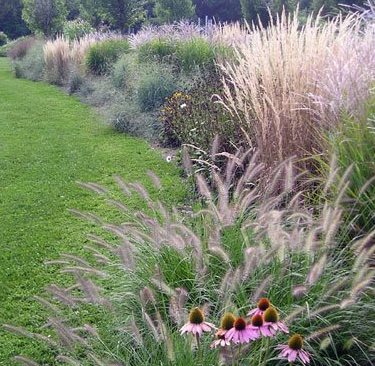
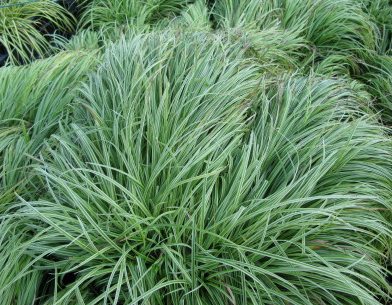
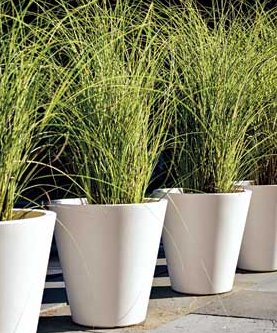
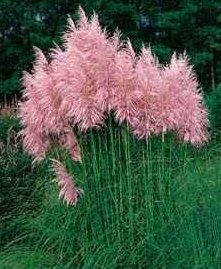
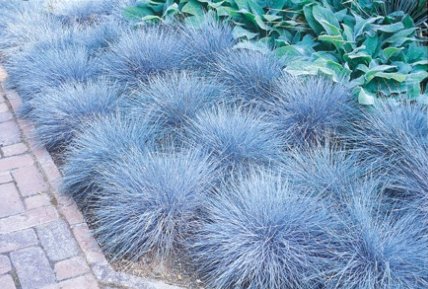
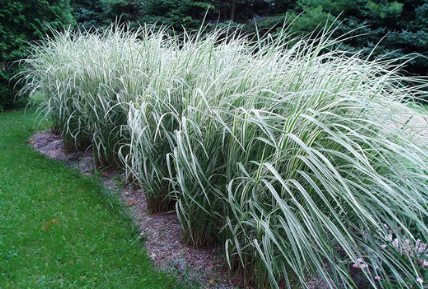
Most grasses prefer full sun, open position, well drained but moisture retaining soils. High fertility encourages leafy growth rather than flowers. Plants can be easily divided when well established so that covering an area is a low cost project spread over a period of time.